Author: Zhu Yulong
At Panasonic’s annual investor conference on June 1st, a comprehensive review of all aspects of the business was conducted, along with an overview of the medium-to-long-term plan.
From Panasonic’s perspective, global automotive production will recover this fiscal year, but chip shortages will continue in the future. According to Panasonic’s latest performance outlook, sales in the automotive sector for the fiscal year 2022 to 2023 (ending in March 2023) will increase by 19%, and operating profit will increase by JPY 16.6 billion, with approximately 14% of revenue coming from the automotive sector.
Panasonic has defined pure electric vehicle batteries, efficient supply chain management, and 3 air conditioning businesses as growth areas and will invest JPY 400 billion over the next 3 years.
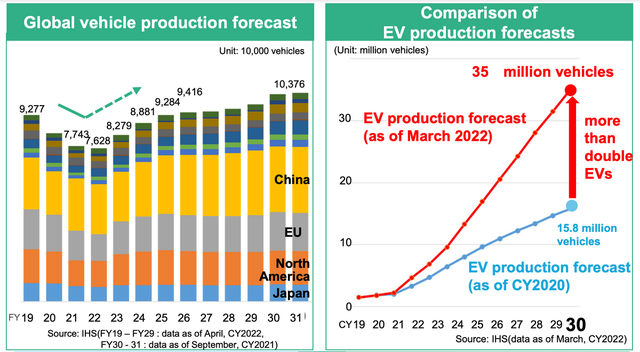
Battery business
At present, Panasonic Energy’s main task is to expand production capacity. By 2028, the annual output of pure electric vehicle batteries will increase by 3 to 4 times from the current 40GWh-50 GWh.

Panasonic will identify the profitability of large-capacity new batteries at its factory in Wakayama Prefecture and confirm production in North America. The company plans to increase its operating profit by 36% to JPY 87 billion in fiscal 2024 compared to fiscal 2021.
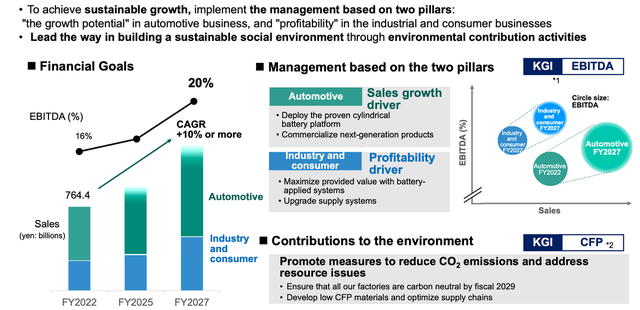
To increase its market share in major markets such as North America, where demand is expected to increase, it is necessary to significantly strengthen production capacity. The development of a large-capacity new battery for installation in high-priced pure electric vehicles was completed in May, and trial products are now available. In FY2022, Panasonic produced 5.5 billion 2170 batteries and 4.6 billion 1865 batteries, and began supplying new materials for the 2170 batteries. Commercialization of the 4680 batteries is about to begin.
 By FY2024, in order to expand its business scale, the company will increase its workforce to 1,000 employees. For Panasonic, the main goal of the 2170 battery is to retain Tesla and explore new customers, while the 4680 battery is meant to rapidly promote commercialization with Tesla.
By FY2024, in order to expand its business scale, the company will increase its workforce to 1,000 employees. For Panasonic, the main goal of the 2170 battery is to retain Tesla and explore new customers, while the 4680 battery is meant to rapidly promote commercialization with Tesla.
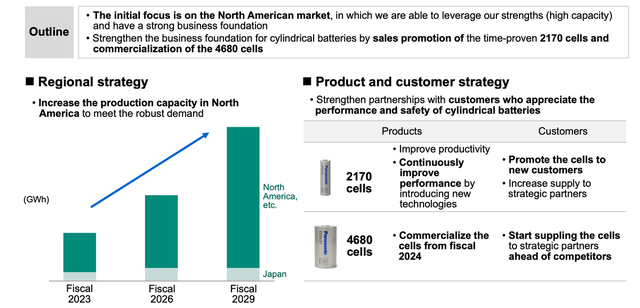
Currently, Panasonic has gradually started product development and testing for trial production and will then proceed to large-scale commercialization in Japan. The preparation of the supply chain will also gradually commence.
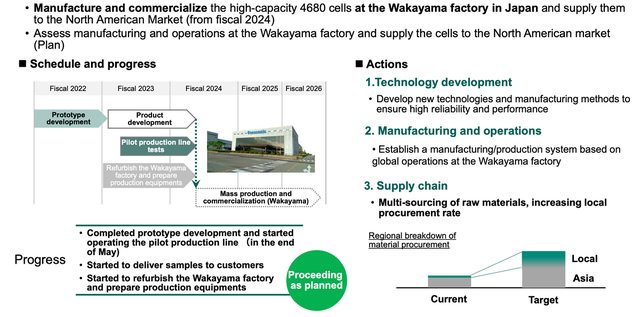
In Panasonic’s information materials, we can see that not only battery development, but also factory battery transformation and the preparation of a new generation of dry battery factories are also under consideration. Faced with a certain market, Japanese battery companies are embarking on a new round of investment.
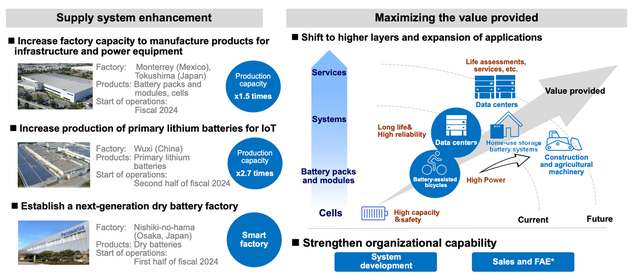
Automobile components business and connectivity business
Apart from Panasonic’s automotive components, the aviation imaging system and large-scale projector systems for events of Panasonic Connect are still valuable in the market and will be invested 50 billion yen within 3 years. The challenge in the automotive entertainment system is enormous, which originally had the largest market share in the world.
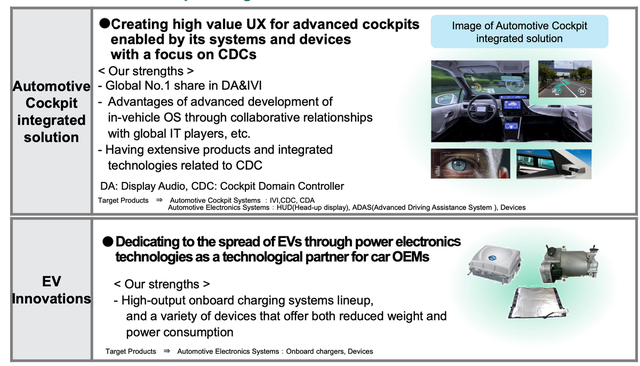
For Panasonic, the trend towards cockpit integration means that the ECU is integrated at one go, and direct procurement is carried out for the LCD instrument panel and center console. After the separation of hardware and software, automobile manufacturers around the world have achieved deep customization of the automobile by outsourcing the hardware to Tier 1.
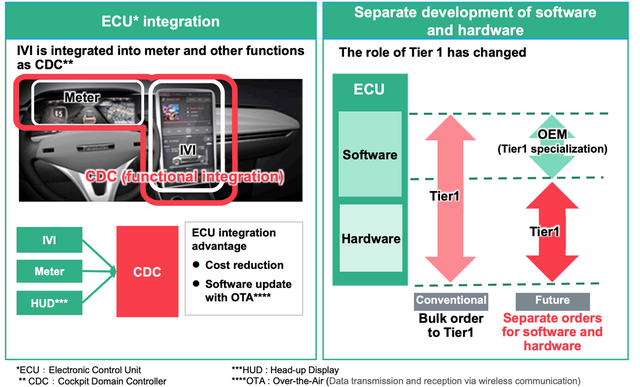
At present, as IVI, CDA, and navigation systems used in traditional Japanese and European and American automobile manufacturers undergo reconstruction, particularly with changes in specifications, the manufacturing and product lines of these hardware components have also undergone changes.
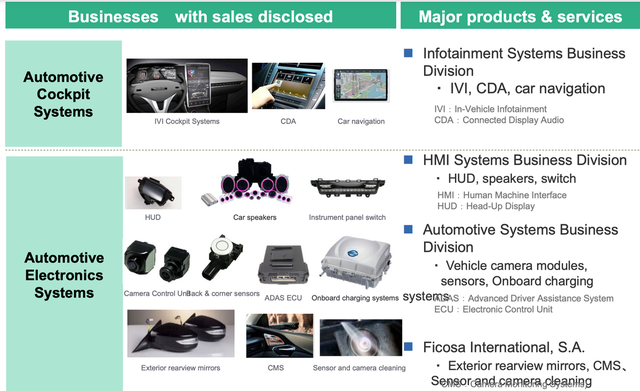 Summary: It seems that Panasonic’s strategy for its automotive business is to focus on creating valuable hardware. In terms of energy, they are rapidly advancing with the 4680 battery, and we look forward to seeing its standardized power in the future.
Summary: It seems that Panasonic’s strategy for its automotive business is to focus on creating valuable hardware. In terms of energy, they are rapidly advancing with the 4680 battery, and we look forward to seeing its standardized power in the future.
This article is a translation by ChatGPT of a Chinese report from 42HOW. If you have any questions about it, please email bd@42how.com.
